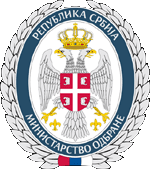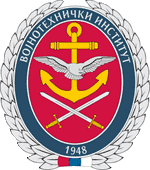|
REPUBLIC OF SERBIA MINISTRY OF DEFENCE
MINISTRY OF DEFENCE Material Resources Sector Defensive Technologies Department
|
EXPERIMENTAL DETERMINATION OF ACTIVE STRUCTURE DAMPING RATIO USING DIFFERENT CONTROL STRATEGIES IN SYSTEM OF ACTIVE VIBRATION CONTROL
MIROSLAV JOVANOVIĆ Technical Test Centre, Belgrade, mjovano@sbb.rs Aleksandar simonović Faculty of Mechanical Engineering, University of Belgrade, Serbia, asimonovic@mas.bg.ac.rs NEBOJŠA LUKIĆ Technical Test Centre, Belgrade, nesaluca@ptt.rs NEMANJA ZORIĆ Faculty of Mechanical Engineering, University of Belgrade, Serbia, nzoric@mas.bg.ac.rs Slobodan stupar Faculty of Mechanical Engineering, University of Belgrade, Serbia, sstupar@mas.bg.ac.rs SLOBODAN ILIĆ Technical Test Centre, Belgrade, slobodan.ilić@vs.rs
Abstract: This paper presents a design, development and experimental determination of the active vibration control system of aluminum plate. Active structure consists of aluminum plate, strain gages like sensor platform and PZT piezoelectric actuator. Based on characteristics of the integrated elements, the whole active vibration control sistem is designed and developed. The active vibration control system is controlled by PI, PD and PID control strategies. Control algorithm was implemented on the PIC32MX440F256H microcontroller platform. The experiment was considered the change of damping ratio in the case of free vibration for different control strategies. The half-power bandwidth method was using for determination the damping coeficient for different types of control. The experiments confirmed the effectiveness of the developed system af active vibration control. Keywords: Smart structure, modal analysis, damping ratio, active vibration control, controller, piezoelectric actuator.
|
|||||
|
||||||

